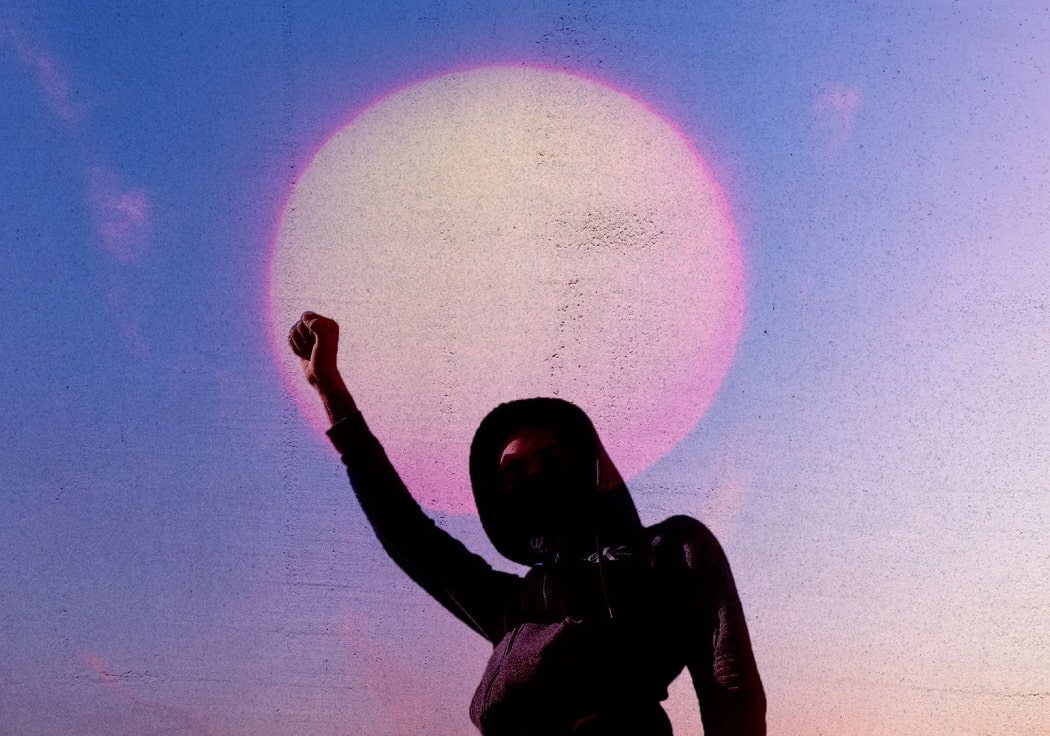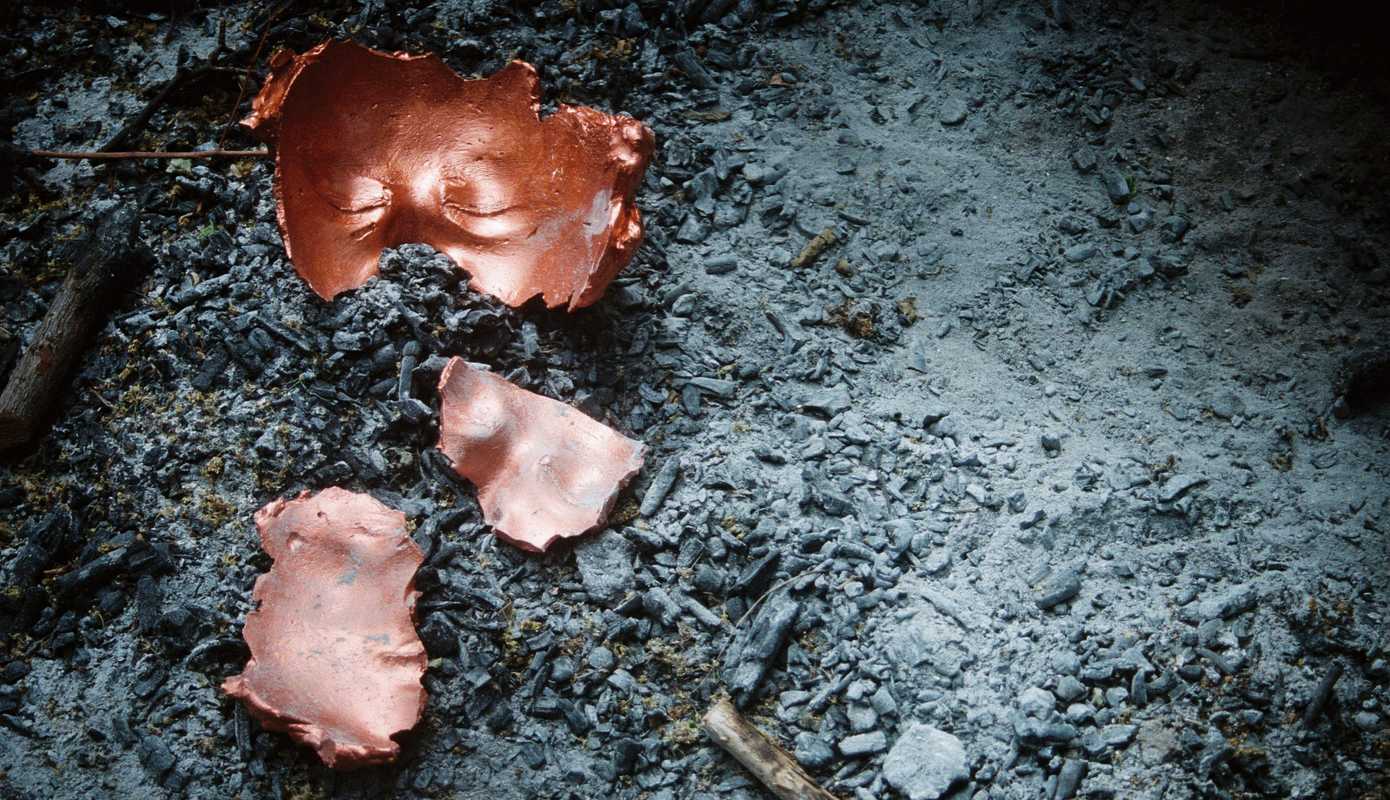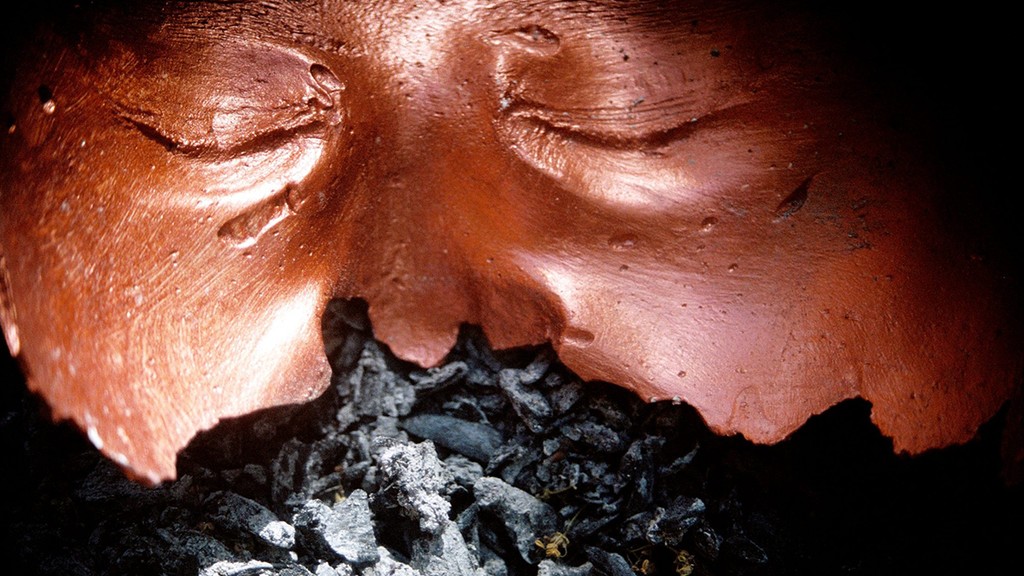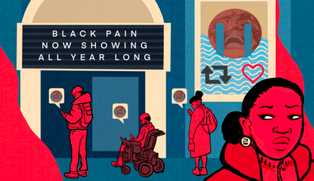This article was made possible by donations to the Black Creatives Fund. Donate now.
My exploration into the spiritual life of objects began in the British Museum. I walked through cavernous rooms filled with the granite heads of Egyptian kings, queens and deities, objects that came to be here through means akin to war crimes. Displaced from their homelands, each brazenly-displayed object contained vivid memories of violence. Moving between the gloomy halls, I felt my stomach twist in indignation.
When the Benin Empire was sacked by the British Royal Marines and the Niger Coast Protectorate in 1897, a vast number of ivory, brass and bronze treasures – artistically and spiritually significant to the people of Benin and Nigeria – were taken. They now lie in the hands of around 160 institutions, the British Museum obtaining the biggest hoard of approximately 900 pieces. Created by specialist guilds for the royal court of the Oba in Benin City, they were activated through ritual to honour the ancestors and to validate the ascension of a new Oba. Now they sit dormant behind glass: fossilised trophies of colonialism.
Here in the museum, faced with the glaring legacy of the British Empire, my multinational heritage feels conflicted. I am Nepali and Afro-Caribbean, but irrefutably British too. I feel strongly connected to the multicultural ethos that exists in London and in Brixton, where I have lived all of my life. But like many others, I feel alienated by the harsh realities of prevailing colonial attitudes revealed in a post-Brexit society.
In room after room, I come face to face with masks encased in glass. The ancient practice of mask-making exists in both my Nepali and Afro-Carribean heritage. A mask’s mystical powers are only fully realised when worn by a person, when put into motion and used in symbolic ritual – much like the Benin bronzes which belong in their homeland. But these masks – taken from Africa and placed in European galleries – are held in stasis, in symbolic death.

My grandmother, Salome Smeaton-Russell, had her first solo show, ‘Baisakh’, at the 198 Gallery in London in 1996 – the first exhibition of a female Nepali artist in the UK. She visualises traditional Nepali tribal gods, goddesses and spirits in various sculptural and artistic forms. By using papier mache to craft masks, she maintains a strong cultural link with the people of Nepal and our tribe, the Gurungs, who produced and traded the finest handmade papers for centuries, forming an integral part of Nepali art, craft and culture.
Our walls are lined with her vivid depictions of the fearsome tantric deity Bhairava, Nepali folklore god Lahkey with his protruding fangs, and others that have appeared to her in meditation. In my own work, I wanted to pay homage to these influences and pose new questions, delving deeper into the function of masks in more recent history.
For my performance work Adding A Face, I used alginate to make casts of my face on the concave part of the plaster, leaving the outside rough and undefined, giving these doubles of my face an uncanny relation to my interior psyche. To fragment the site of my face, I burnt the casts in a fire, watching the gradual splitting away of the plaster, then painted the remnants bronze.
To create movement, I incorporated the mask fragments into an audiovisual piece, placing them in a natural setting with eerily fast-moving leaves and a veil made of traditional Nepali textiles. A voice, split in two, recites a poem. Using jargon historically deployed in order to ‘Other’ people, the words and phrases create a rhythmic chant.
By putting the masks into motion, Adding A Face stands in opposition to the legacy of the museum as a carceral space, stressing the importance of spiritually resonant objects and beings to be free from bondage. By both activating and fracturing the masks, I celebrate the sense of dividedness that comes from belonging to multiple cultures, retaining a connection to my roots, and acknowledging the permeable material of identity.
My history is not constructed through labelled objects in museum cases. It is constructed through a tradition of oral history, family photo albums and, most importantly, the site of my face. I can see my history – of Jamaica, Nepal, and India – in the contours of my nose, my full lips, my curly hair and brown skin.
In my research for Adding A Face, I came across a record of German author, Markus Kupferblum, claiming the word mask is derived from the Spanish más que la cara, which means “more than the face” or “added face”. For me, masks – activated through use and ritual – speak to the nuance and multiplicity needed to hold together the conflict of my multinational heritage. Fragmented and in motion, the masks in my work expose the myth that we have just one true face, and embrace the necessity of being able to ‘add’ a face.
Adding A Face won first prize in the Black Cultural Archives ‘Windrush Waves’ Competition and is currently being shown in an online exhibition on their website, with a physical exhibition scheduled for next year due to Covid-19. A print will be included in The Department Store’s Lockdown Collection in Autumn and a short presentation as part of Phantasy Saturday School’s series of lectures in partnership with 198 Contemporary Art’s and Learning and George Padmore Institute.





